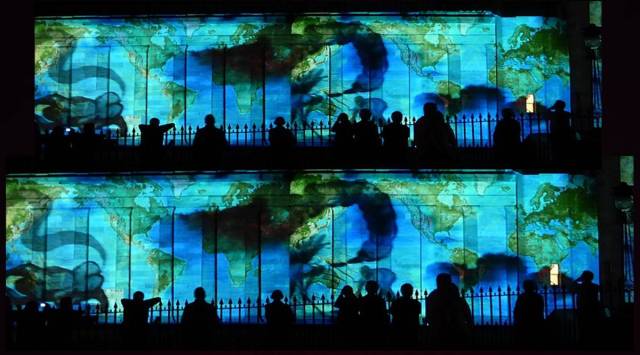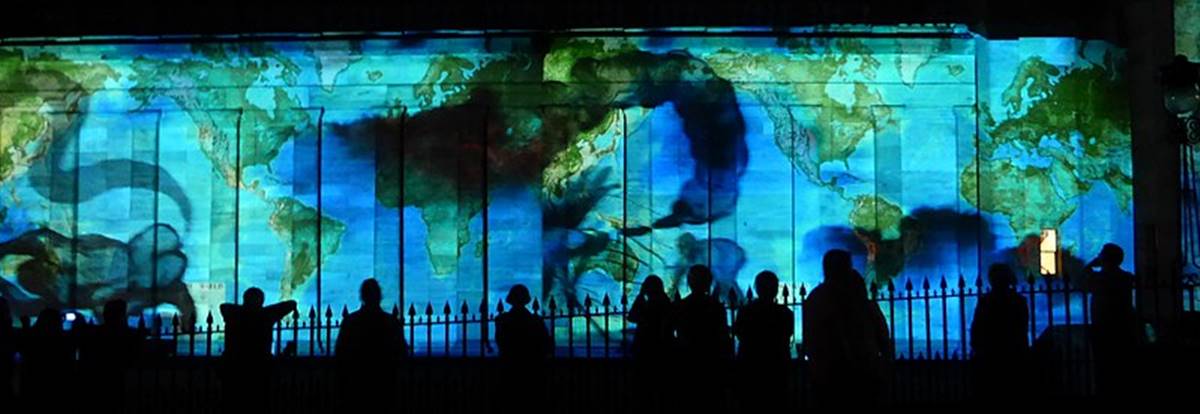What makes artist Nalini Malani’s seminal artwork ‘In Search of Vanished Blood’ essential viewing
Born in Karachi the year before the partition of the Indian subcontinent, in her works, Malani -- who shuttles between Amsterdam and Mumbai -- draws from her own history of displacement as a refugee, and also often uses imagery borrowed from Hindu mythology, ancient Greek and Indian history and ecological disasters.
 First showcased at the prestigious art festival of Documenta in 2012 in Kassel, Germany, in the seminal work Malani surrounds the viewers with rotating mylar cylinders hung from the ceiling bleed with figures painted on its transparent surface, and showcased alongside a multi-channel video. (Pic source: Wiki Commons)
First showcased at the prestigious art festival of Documenta in 2012 in Kassel, Germany, in the seminal work Malani surrounds the viewers with rotating mylar cylinders hung from the ceiling bleed with figures painted on its transparent surface, and showcased alongside a multi-channel video. (Pic source: Wiki Commons) Considered a pioneer of experimental video art in India, in this video installation, Malani reflects on the condition of women and on a larger spectrum the social and societal apathy. First showcased at the prestigious art festival of Documenta in 2012 in Kassel, Germany, in the seminal work Malani surrounds the viewers with rotating mylar cylinders hung from the ceiling bleed with figures painted on its transparent surface, and showcased alongside a multi-channel video.
 . First showcased at the prestigious art festival of Documenta in 2012 in Kassel, Germany, in the seminal work Malani surrounds the viewers with rotating mylar cylinders hung from the ceiling bleed with figures painted on its transparent surface, and showcased alongside a multi-channel video. (Pic source: Wiki Commons)
. First showcased at the prestigious art festival of Documenta in 2012 in Kassel, Germany, in the seminal work Malani surrounds the viewers with rotating mylar cylinders hung from the ceiling bleed with figures painted on its transparent surface, and showcased alongside a multi-channel video. (Pic source: Wiki Commons)
Borrowing its title from Pakistani poet Faiz Ahmed Faiz’s Urdu poem Lahu Ka Surag, and influenced by the 1984 novel Cassandra by Christa Wolf, and the 1910 fictional work The Notebooks of Malte Laurids Brigge by Rainer Maria Rilke, in the work Malani’s female protagonist’s tell stories of atrocities and injustice from the past, demonstrating how women’s bodies have been connected to violence and territory for centuries.
The soundscape, meanwhile, features text excerpts from Heiner Muller’s Hamletmachine (1977), Samuel Beckett’s Krapp’s Last Tape (1958) and Gayatri Spivak’s English translation of writer Mahasweta Devi’s Draupadi.
Born in Karachi the year before the partition of the Indian subcontinent, in her works, Malani — who shuttles between Amsterdam and Mumbai — draws from her own history of displacement as a refugee, and also often uses imagery borrowed from Hindu mythology, ancient Greek and Indian history and ecological disasters.



- 01
- 02
- 03
- 04
- 05




























